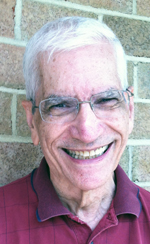By Joel H. Cohen

NEW YORK — Yiddish, often considered an endangered species, seems to be enjoying a revival.
The most dramatic example is a literal revival — the new National Yiddish Theater Folksbiene production of Fiddler on the Roof (under the title, Fidler afn Dach) at the Museum of Jewish Heritage in New York City. Directed by Joel Grey, winner of Academy and Golden Globe Awards, it features Steven Skybell, a “Fiddler” veteran, as Tevye.
The show is all in Yiddish (but it posts English translation, “like the opera,” one audience member commented. Russian, too.)
One Jewish couple, friends of ours, who neither understand nor speak Yiddish, loved the show for, among other virtues, its “tremendous enthusiasm,”
Our own Yiddish ability is moderate – we understand it better than we speak it, and often get stuck trying to find the key word of a thought we’re trying to express.
When my wife and I were kids, Yiddish was, respectively, often or occasionally our parents’ language of choice, sometimes to conceal a thought from the kids; Jewish karma struck when one of our sons, then about 11, bought a Yiddish-English dictionary, for “self-protection,” he said, to understand what we were saying..
“Fiddler” was always a big part of our entertainment – we’d get to see the play whenever a relative came to New York from out of town – We got to see Tevye played on stage by, among others, Zero Mostel, Hershel Bernardi, Harry Goz on stage, and, in the movie, Topol.
Many years ago, when our youngest child (who just turned – gulp—50) was in elementary school, he played the Rabbi character in a very ethnically diverse-cast production of Fiddler.”
We thought it would be a nice treat for him (and us) to see what was then the latest New York professional production. After the show, we three waited at the stage door to meet the professional actor who had played the rabbi. When we told him that that our son had played the same part, the actor generously autographed his Playbill “to my colleague.”
We decided that, since we were there, we’d wait for the star of the production and tell him how terrific his performance was, how utterly believable his Tevye and his invocation of the fictional shtetl Anatkva were.
He came out, wearing a loud Hawaiian shirt and holding the hand of a pretty youg blonde woman. So much for the great illusion.
But Tevye and his daughters, their diverse suitors, as well as Golde, Yente the Matchmaker and the rest, including the specter of Czar Nicholas. were and are back in force, now all in Yiddish.
This column has mentioned how such unlikely sources as the New York Times crossword puzzle and cable news anchors use Yiddishisms liberally —mishegayis and meshugenah are among cable-news favorites .
So, at least in this East Coast area, Yiddish lives.
*
Cohen is a freelance writer based in New York. He may be contacted via joel.cohen@sdjewishworld.com